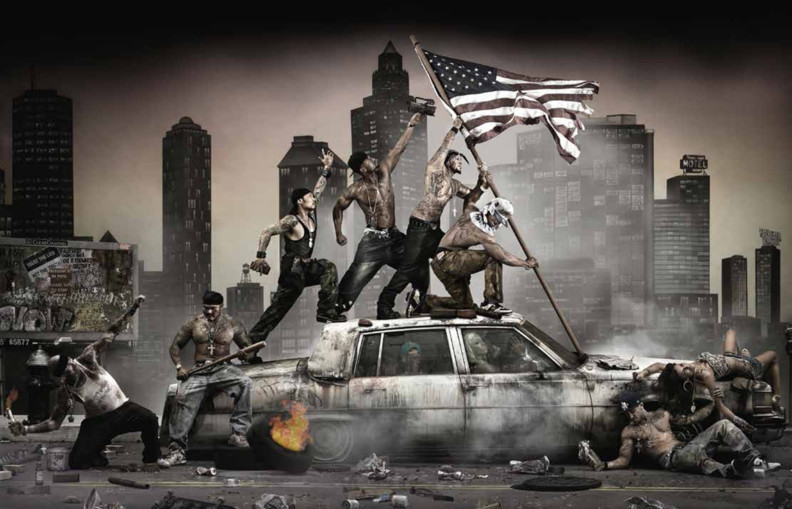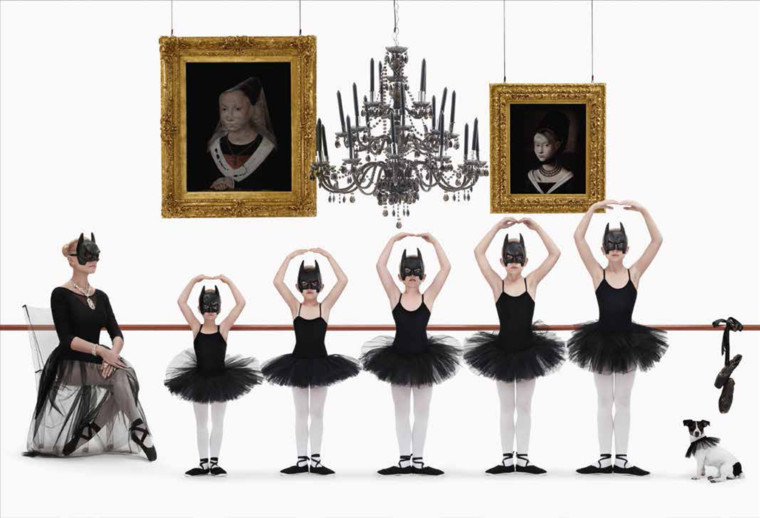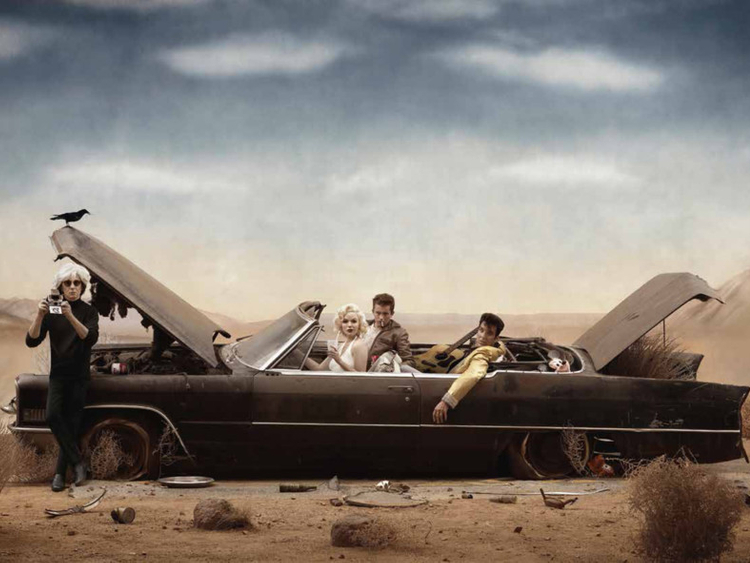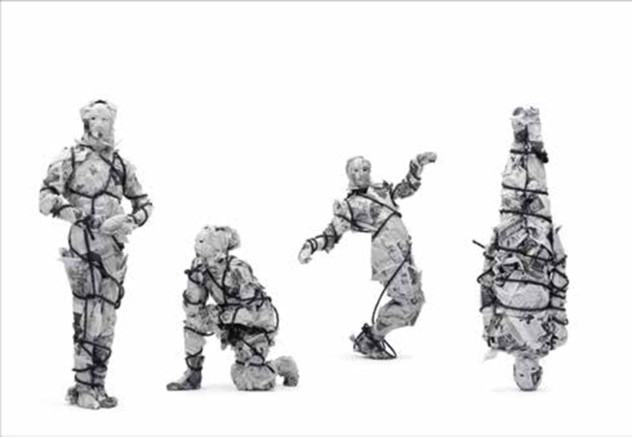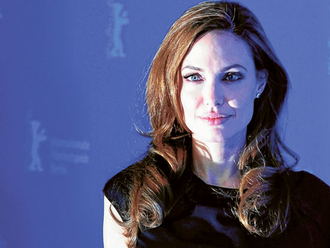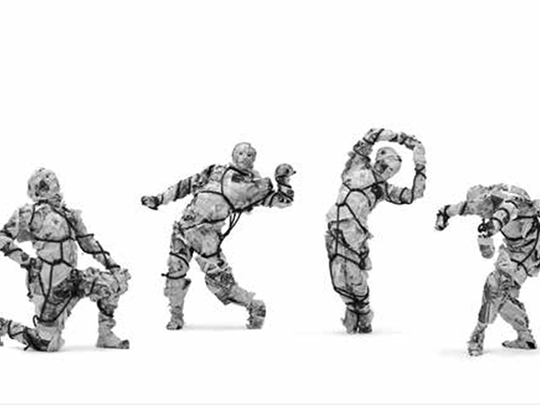
Opera Gallery, Dubai, is hosting a retrospective of the work of renowned photojournalist and fine art photographer Gérard Rancinan. The show features artworks from some of his most acclaimed series and marks the debut of his latest series, “Paper Men”.
Rancinan became an apprentice in the photography lab of a well-known French newspaper when he was just 15 years old, and at 18 he was the youngest photojournalist in France.
In the early 1970s he began travelling around the globe covering wars, natural calamities and other significant events. His photographs of contemporary events and portraits of famous personalities of the 20th century have been published in the most prestigious international magazines and newspapers, and he has won many awards for his work, including an unprecedented six World Press Photo Awards.
A desire to explore the complexities of the human condition and of our world more deeply led him to move to fine art photography. He now works with a team of writers, philosophers, social scientists, hair and make-up artists, anthropologists and other creatives to stage elaborate, highly detailed tableaux featuring layered narratives about contemporary life.
His themes range from the tragedy of migration and our changing lifestyles, to the role of the media in modern society and the human quest for spiritual enlightenment. His visually striking and thought-provoking photographic artworks have been exhibited in prestigious museums and galleries, published in renowned magazines across the world, and sold for record prices at major auctions. He has been named Chevalier and Officer to the Order of Arts and Letters.
Rancinan spoke to Weekend Review about the concepts and creative process behind his work. Excerpts:
How do you make your portraits of famous figures so unique?
I never ever take posed pictures in predictable surroundings. I had Castro standing defiantly on a hill with the American coastline in the background, and caught Pope John Paul II in a quiet moment as he knelt to kiss the ground with no entourage around him. The more famous the personality, the simpler I try to make the image, because my ultimate aim is to convey that however big they may be, they are still just a miniscule part of the cosmos.
Why did you move from photojournalism to fine art photography?
After 25 years of working for newspapers and later with the Sygma Press Agency, I came to a point when I had achieved all my dreams of being published in the best publications and receiving top awards. I also saw how media was changing and how the nexus between media and politics was curbing our freedom to report impartially. I felt the need to find another way to tell my stories.
For example, I had done a report about immigrants in France, but leading French magazines were not interested in publishing it. But when I produced an artistic tableau, “The Raft of Illusion”, telling the same story, and exhibited it in a museum, the same magazines were eager to publish it. I changed the form of my work and where I display it, but my stories are the same, and they are inspired by what I see around me.
What is your latest series “Paper Men” about?
In the old days, journalists checked their facts and took responsibility for their reports. But that has changed. While the existence of newspapers is threatened by social media and online news, the media, especially television, is more interested in sensationalism, promoting motivated agendas, and joining the general hysterical chorus rather than responsible, unbiased reporting of the reality.
My Paper Men bound with newspapers talk about the political, social and economic pressures that curb the freedom of contemporary media, and the deteriorating standards of journalism today. In an earlier work “Press Power”, I highlighted the power without accountability that today’s multitasking reporters wield over the public.
What is the concept behind your series “The Destiny of Man”?
It is about the insatiable curiosity that has allowed human beings to land a spacecraft on a comet, and about the human desire for elevation and self-transcendence. I have used the symbolism of an angel, and shown people wearing artificial wings to express their desire to control their baser instincts and elevate and enlighten themselves.
What do the celebrity clones and the Batman Family say about our society in the “Wonderful World” series?
Once again I have used obvious look-alikes of icons from the past to highlight the schizophrenia in a society where everybody wants to be a Michael Jackson or Marilyn Monroe, and migrants risk their lives to reach what they imagine to be a wonderful Disneyland.
The Batman Family is a model family. The husband has a job in finance, the wife has branded clothes, bags and jewellery but her life is empty and she is always depressed, and seeks refuge in doing charity. The children learn to sing, dance and are perfectly turned out and well brought up. They all wear Batman masks because they think they are better and smarter than others and are superheroes who will save the world, but perhaps they need saving themselves.
The world you have shown in “Metamorphosis” is quite the opposite of this idealised picture?
This series is about the big changes happening in our society such as mass migrations, and obesity and other health problems caused by overconsumption of junk food. Each image in this series is inspired by a famous painting from art history, linking the present with the past.
What is the significance of the table from Da Vinci’s “The Last Supper”, which is a recurring motif in your work?
It is important to learn from the past, and to understand that everything we achieve today is done by standing on the shoulders of those who came before us. This table is an important link to our past that I use in every series. Christ and the apostles ate at this table and left, but humanity is still dining at this table.
In the series “The Destiny of Men”, I have shown the angels feasting on the crumbs left behind by the original diners. In “Wonderful World I” have seated look-alikes of idols such as Elvis, Einstein, Amy Winehouse, Che Guevera, Mao, Mother Teresa and Gandhi at the table. In “Metamorphosis I” have an entire cast of obese people at the table, which is laden with piles of junk food. The creator of fast food, who got rich by tempting poor people to eat his high calorie, low-priced food, sits at the centre of the table eating a frugal organic meal.
Why is the “Ocean” series so different from the others?
This is a very personal series of photographs of the ocean taken from the top of a sand dune near my childhood home in the South of France. I have been taking these pictures of the different moods of the ocean for 15 years. As a child I used to go there with my father and maybe this is the place that inspired me to be curious and creative and to try and cross the line of the horizon. In my other works you can hear the noise of the world, but this is my secret haven, a place where I am intensely aware that I am a small speck in a big universe.
Jyoti Kalsi is an arts-enthusiast based in Dubai.
“The Photographer Rancinan in Dubai” will run at Opera Gallery, DIFC, until October 20.



